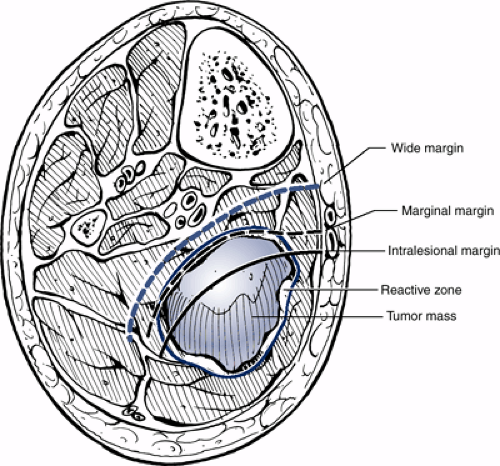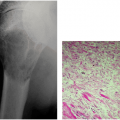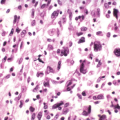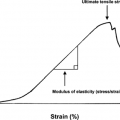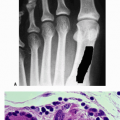Soft Tissue Tumors
John Heiner
Jeremy White
The treatment of soft tissue tumors is dictated strictly by the diagnosis. Based on the pathology of the tumor, appropriate treatment can involve observation, surgery, radiation and/or chemotherapy. This chapter will discuss the general treatment principles.
Surgical Management
Benign Soft Tissue Tumors
Benign tumors represent the vast majority of soft tissue lesions. Often, the diagnosis of a benign tumor can be made based on physical examination findings and imaging studies. If there is confidence that a tumor is benign, treatment can be either observation or excision.
Indications for excision of a benign lesion
Unacceptable symptoms from mass effect
Known aggressiveness of the tumor type (Box 4.4-1)
Uncertainty in the diagnosis (e.g., rapidly enlarging mass)
Malignant Soft Tissue Tumors
Almost all soft tissue sarcomas are treated with surgical excision. Widespread metastatic disease where local control provides no benefit is a relative contraindication to surgery. Historically, soft tissue sarcomas were treated with amputation. Improvements in radiation, chemotherapy, and imaging and a better understanding of surgical margins have made limb salvage possible in the majority of cases. For limb salvage to be pursued, the excision should give equal local control and function as good as or better than that of an amputation.
General Principles of Soft Tissue Sarcoma Surgery
Vascular involvement
If a major vessel is contained within the wide surgical margin, excision and reconstruction of the vessels are indicated.
Neural involvement
If major nerves are contained within the wide surgical margin, necessitating resection of the nerve(s), the functional result must be weighed against amputation.
If the function of the residual limb is likely to be very poor, amputation may be a better option.
Osseous involvement
If cortical destruction is present, the bone must also be excised and reconstructed as indicated.
Dead-space management and soft tissue coverage
The defect should be closed to minimize the space for fluid collections, which may impair wound healing. Surgical drains are frequently used.
Large defects may require rotational or free flaps for closure (Fig. 4.4-1).
Split-thickness skin grafts can be used when there is a skin defect over healthy muscle.
Box 4.4-1 Low-Grade Soft Tissue Tumors That May Exhibit Aggressive Behavior
Extra-abdominal fibromatosis
Active hemangiomas
Atypical lipomatous tumors
A benign soft tissue tumor (i.e., lipoma) is often surrounded by a capsule, whereas a sarcoma is surrounded by a pseudocapsule and a reactive zone. The types of surgical excisions are defined as intralesional, marginal, wide, or radical according to the relation of the excised tumor to the surrounding tissue (Fig. 4.4-2).
Intralesional Excision of Soft Tissue Tumors
Definition: Dissection plane is carried directly into the tumor; removal is piecemeal
Recurrence rate: As gross tumor is left behind, results in 100% recurrence rate in malignancies
Indications
Often used for biopsy purposes
Rarely indicated in treatment of sarcomas
Can rarely be used for debulking to relieve mass effect of tumor in palliative surgery
Marginal Excision of Soft Tissue Tumors
Definition: Tumor is excised along with the pseudocapsule, with the dissection carried through the reactive zone
Recurrence rate: Recurrence rate for soft tissue sarcoma approximately 25% to 50%
Indications
Used predominantly for treatment of benign lesions (Fig. 4.4-3)
Rarely used alone for sarcoma treatment, as tumor will extend to the margin of the resection
If necessary because of anatomic limitations, marginal excision with radiation may potentially provide equivalent local control as wide excision.
Wide Excision of Soft Tissue Tumors
Definition
Tumor is excised along with pseudocapsule, reactive zone, and cuff of normal tissue.
Width of normal tissue that needs to be excised is variable and often dictated by anatomic location and aggressiveness of tumor.
Recurrence rate: Approximately 10% or less in general
Indications
The basis of surgical treatment for most soft tissue sarcomas (Fig. 4.4-4)
Used for aggressive benign lesions (extra-abdominal fibromatosis, active hemangiomas)
Radical Excision of Soft Tissue Tumors
Stay updated, free articles. Join our Telegram channel

Full access? Get Clinical Tree




